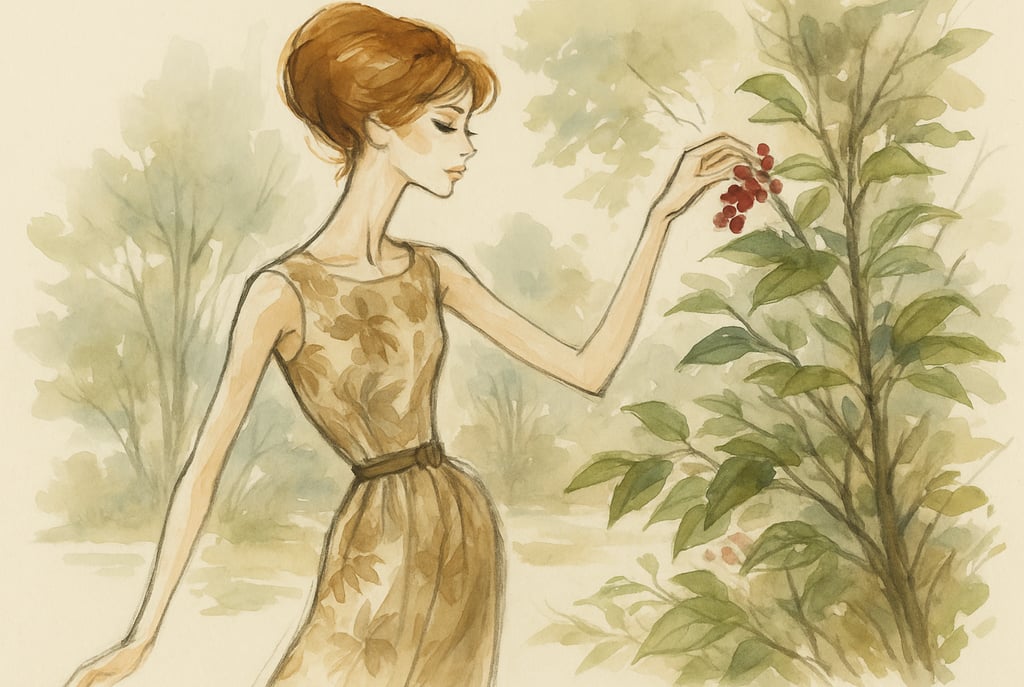Why Berry Picking Was Once a Sacred Act: Folklore, Forest Spirits, and First Fruits
In old Scandinavian folklore, the first berry of the season wasn’t for people—it belonged to forest spirits. Discover the rituals and beliefs that made berry picking a sacred act.
FOOD HISTORY & TRADITIONS


For most of us, berry picking is a carefree summer pastime—wandering through woods or fields, filling baskets with blueberries, lingonberries, raspberries, or wild strawberries, tasting as we go. But for centuries in Scandinavia and other parts of Northern Europe, berry picking was far more than a pleasant seasonal activity. It was a ritual infused with superstition, gratitude, and respect for the unseen powers of the forest.
In Nordic and Baltic folklore, the act of plucking the first berry of the season came with rules. That first ripe berry did not belong to humans. It belonged to the spirits of the land—the unseen guardians who watched over plants, animals, and the health of the wild places themselves. To ignore this belief, it was said, risked bad luck, meagre harvests, or even being led astray and lost in the woods.
The First Berry for the Spirits
Across Sweden, Finland, Norway, and parts of Estonia and Latvia, folk tradition taught that the first berry of summer must be offered to the landvættir (land spirits) or other local guardians. Depending on the region, these beings might be imagined as elves (älvor), trolls, house-spirits like tomtar, or more ambiguous forces tied to the forest itself.
Before eating or collecting any berries, foragers were instructed to leave the first ripe fruit on the bush or drop it gently to the ground while murmuring a quiet blessing or thanks. Some whispered invocations, others simply nodded in acknowledgment. The gesture wasn’t about appeasing malevolent beings so much as showing respect. The forest, after all, was not “owned” by people—it was shared, and its bounty had to be acknowledged as a gift.
In many folktales, failure to follow this rule carried consequences. Spirits might lead careless pickers in circles, making them lose their way, or “hide” the best berry patches, leaving baskets empty despite the season’s abundance.
Blessings, Luck, and Hidden Glades
Folklore also promised rewards for those who respected the spirits’ first-fruit custom. In some Swedish and Finnish tales, leaving the first berry as an offering would prompt the forest to “unlock” its bounty. The respectful picker might be led to a secret glade heavy with fruit, or find that their basket filled twice as quickly as usual.
Parents and grandparents taught these customs to children not only as superstition, but as a way of fostering humility in the woods. Foraging wasn’t simply about taking; it was about recognising nature’s cycles and sharing with the beings—real or imagined—that kept those cycles in balance.
These beliefs also helped to prevent overharvesting. By encouraging people to leave offerings and respect the forest, the customs naturally slowed the pace of picking, ensuring berries ripened and spread their seeds before entire patches were stripped bare.
From Ritual to Memory
By the late 19th and early 20th centuries, as industrialisation and urbanisation pulled more people away from the forests, many of these customs began to fade. Christianity had already dampened belief in elves and land-spirits, and scientific explanations for crop yields and getting “lost” replaced supernatural ones.
Yet traces of the tradition endure. In some rural parts of Sweden and Finland, older generations still nod to the custom, quietly leaving the first berry behind “for luck” before they start to pick. Others keep the ritual alive in a more playful way, teaching children to “feed the forest” as a way of connecting them to nature and its rhythms.
Even without literal belief, the act serves as a reminder: the forest’s bounty isn’t a given. Respecting its abundance—whether through old rites or modern conservation—is key to keeping it healthy for generations to come.
Fun Fact: The Spirits Who Helped the Polite
In some Swedish folktales, those who left offerings weren’t just rewarded with better berry harvests—they were protected. A few stories tell of pickers lost in dense fog, only to hear the faint sound of a bell or see a glowing light, leading them safely home. The spirits, it was said, repaid respect with kindness, ensuring the generous forager never vanished into the wilds.
Why This Folklore Still Matters
The old belief in offering the first berry to the spirits may seem quaint, but it reflects a worldview we’re rediscovering today: a sense that nature isn’t something to conquer, but something we share and depend on. These customs weren’t just about superstition—they were an early form of environmental etiquette, blending awe, gratitude, and restraint.
For modern foragers and hikers, reviving such traditions—whether through ritual or simply by practising sustainable picking—offers a way to connect to the landscapes our ancestors depended on so closely. Even a small gesture, like pausing before plucking the first berry, can turn a casual summer outing into a moment of connection, humility, and quiet reverence for the land.
